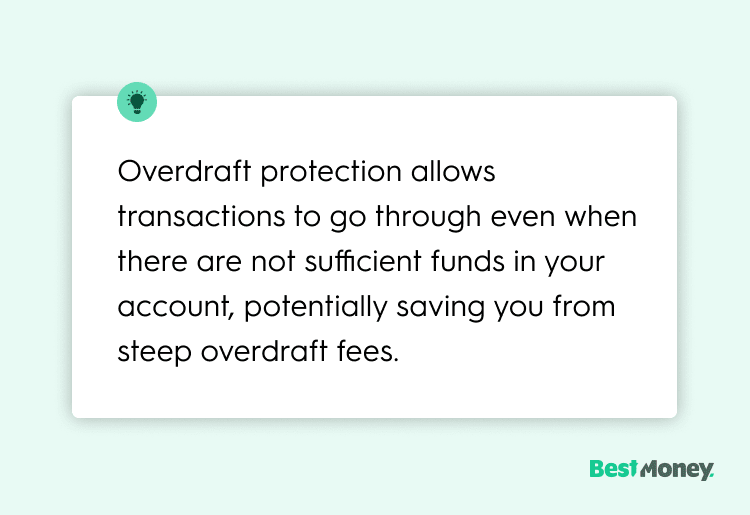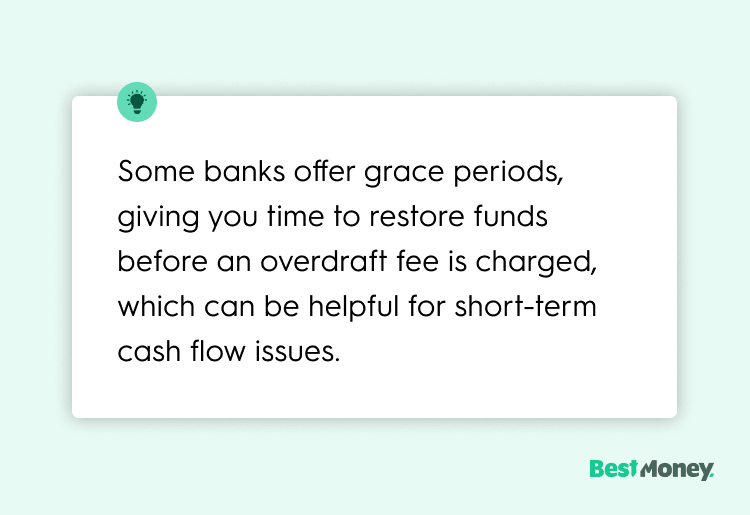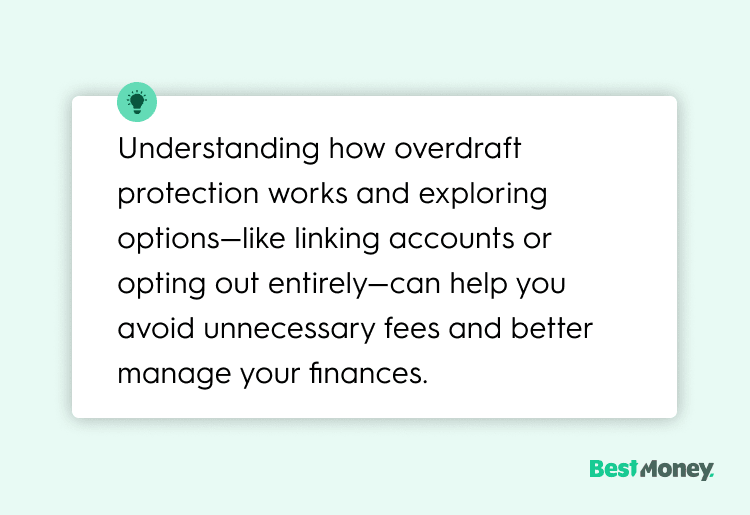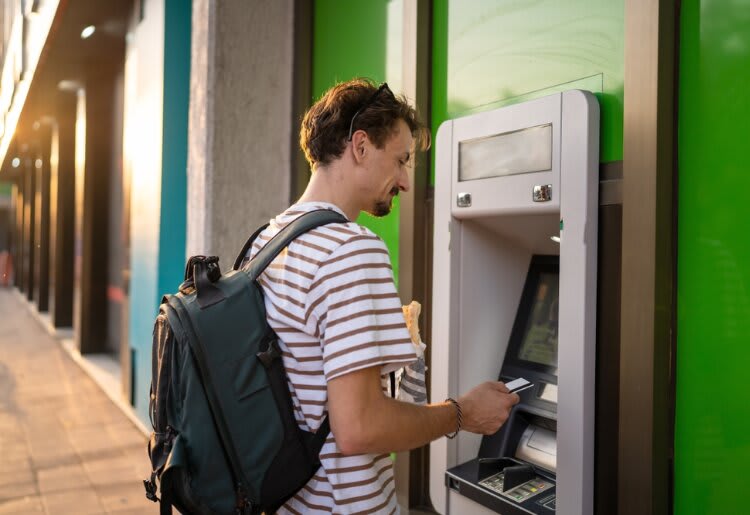
Overdraft fees can cost up to $35 per transaction, and, in some cases, you may be charged multiple fees in a single day, potentially costing you more than $100. Understanding how overdraft protection works is important when evaluating different banking options and managing your account effectively.
In this article, we’ll explain how overdraft protection works, its benefits and drawbacks, and how to decide if it’s the right option for your banking situation.
» Want to avoid overdraft fees? Explore online banks that offer low fees and flexible protection options.
What Is Overdraft Protection?
Overdraft protection allows transactions to go through even when there are not sufficient funds in your account. Banks and credit unions offer overdraft protection as a service to their customers, as it prevents customers from being penalized for overdrawing money from their checking or savings accounts.
If your checking account goes into the negative and you don’t have overdraft protection, your transactions may be declined. If this happens, your bank may charge a non-sufficient fund fee, which typically ranges from $25 to $35. However, there could be other potential consequences, such as late fees, merchant fees, account cancellations, or coverage cancellations.
Overdraft protections essentially saves you from having to pay these fees. It’s important to note that there are no federal laws specifying the maximum amount a bank can charge in overdraft fees, but banks are required to disclose any potential fees when you sign up for your account.

» Looking to get overdraft protection? Find out how to switch banks with our step-by-step guide.
How Does Overdraft Protection Work?
Without overdraft protection, any transaction that exceeds your available balance will be declined or returned unpaid, leading to bounced checks or declined debit card transactions. In these cases, your bank will charge you an overdraft fee.
With overdraft protection, however, your bank will automatically transfer funds, often as a pre-approved loan, to cover the shortfall when your account is overdrawn. This transfer can come from a linked savings or checking account. Once the overdraft protection is triggered, a fee is typically charged to your account.
Some banks offer fixed monthly fees for overdraft protection, while others provide it for free. You can usually sign up for overdraft protection when opening a checking account, and some banks allow you to choose different levels of protection, including automatically declining transactions that would overdraw your account. Additionally, some banks offer grace periods, giving you time to restore funds before an overdraft fee is charged.
While overdraft protection can help, it often comes with fees of up to $12 per occurrence, and banks are not obligated to offer or honor it for every transaction—even if you’ve opted in. But if they do, $12 is still much lower than $25 to $35 per overdraft charge.
Types of Overdraft Protection
Various banks offer different types of overdraft services, such as linking accounts or offering lines of credit, and each may have different rules, fees, and terms. You should read bank disclosures carefully before choosing the best option for you. Here are just a few of the different types of overdraft protection available:
Opt-in overdraft protection
Most banks offer opt-in overdraft protection. With this type of protection, your bank will charge you a fee for protection in exchange for covering your overdraft charges.
Credit cards
Some financial institutions enable customers to link their checking accounts to their credit cards. Instead of paying a fee when you enter your overdraft, your credit card will be charged.
To access this service, your credit card and checking account must usually be from the same bank. While this is a convenient option, keep in mind that credit card interest rates can be high, so make sure to pay off your card balance by the due date each month to avoid interest fees.
Linked bank account
You may also have the option to link your checking account to another bank account for overdraft protection. Then, when you go into overdraft, your bank will transfer funds from the linked account to make up the difference. Your bank will usually charge a small transfer fee for this service.
Credit line
Some banks also enable you to open an overdraft line of credit (a possible type of business loan), which means your bank will transfer funds into your checking account to cover the overdraft. You’ll then have to pay interest on the amount you are overdrawn until you get your account balance back to zero or more. It’s important to note that credit lines are usually available to those who have strong credit scores.

» Read our survey on digital banking trends, and learn why online banking may be the right choice for you.
What Are the Pros and Cons of Overdraft Protection?
Pros | Cons |
|---|---|
Prevents declined transactions | Overdraft protection usually comes with fees, which can add up quickly |
Helps to avoid late fees | May encourage overspending |
May provide a safety net for unexpected expenses when funds are low | If overdraft protection uses a credit line, you may be charged interest on the borrowed amount until it’s paid back |
Can save you from the embarrassment or inconvenience of having a card declined | Not a long-term solution |
Some overdraft protection programs link to a savings account or credit line, potentially avoiding steep fees. | Some banks won’t cover all transactions, and there’s no guarantee that overdraft protection will prevent every fee or declined transaction |
How to Avoid Overdraft Fees
Monitor your account balance regularly through mobile banking apps or online portals.
Set up low-balance alerts to get notifications when your account is close to zero.
Link your checking account to a savings account or credit card for automatic transfers.
Opt for your bank’s overdraft protection program, but review any associated fees.
Opt out of overdraft coverage to prevent transactions from being processed if funds are insufficient.
Create a budget and track expenses to ensure you’re spending within your means.
Consider finding a new bank if you’re unhappy with how your current bank handles overdraft fees. Look for banks with better fee policies, grace periods, and overdraft protection plans.
How to Avoid Entering Your Overdraft
Create a budget to track income and expenses, ensuring you don’t spend more than you have.
Set up direct deposits for consistent and timely payments into your account.
Use financial apps to monitor spending in real-time and get alerts for large transactions.
Build an emergency fund to cover unexpected expenses, reducing reliance on your overdraft.
Use cash for discretionary spending to avoid accidental overspending.
Schedule automatic bill payments right after payday to prevent insufficient funds later in the month.

Bottom Line
Overdraft protection helps cover transactions when your account lacks sufficient funds, preventing declined transactions or additional fees. However, it can come with its own costs, ranging from transfer fees to interest charges.
Understanding how overdraft protection works and exploring various options—such as linking accounts or opting out entirely—can help you avoid unnecessary fees. While it offers convenience in emergencies, it's crucial to manage your finances carefully to avoid over-reliance on overdraft protection and the fees that can come with it.








